It hasn't been a long time since the first generative AI model was released to the public, and people are already picking sides and debating on which of these models is the best. I couldn't tell you which text-to-image model is better than all the rest when we're talking about overall capabilities. But when it comes to illustration, it's pretty clear in my opinion that Dall-E 3 has taken the lead.
I'm a person who doesn't like social media at all. I refrain from using all social media platforms except for Twitter/X, and I've been like that for more than 10 years. I use Twitter to stay up to date on information in fields I'm interested in and that's it.
Ever since late October 2023 I noticed that many people began using illustrations to go along with their tweets. These illustrations were of outstanding quality and fit what they were talking about perfectly. This is no coincidence since Dall-E 3 was released around that time.
Illustrations can be an extremely powerful thing. Regardless of whether you're making educational content or just want to entertain people online, you can use illustrations to make a lasting impact on readers/viewers.
In today's article, I'm going to talk about how you can use Dall-E 3 to make some stunning illustrations.
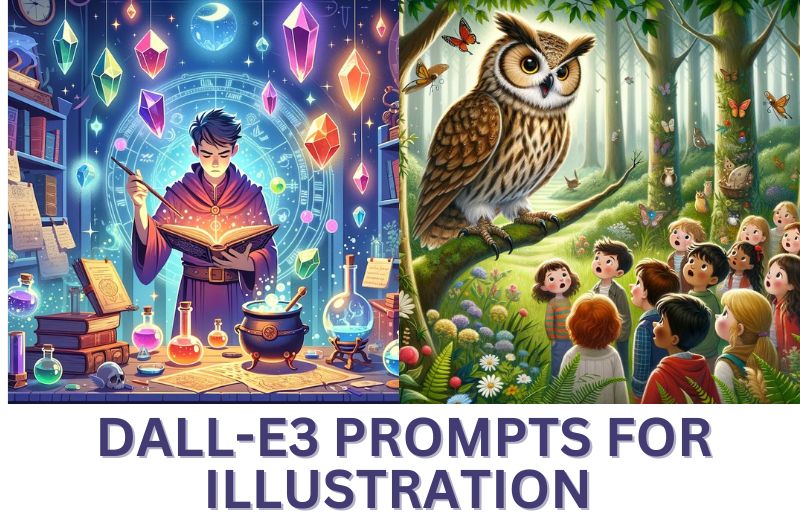
What Is Dall-E 3?
Dall-E 3 is a generative AI model that was created by OpenAI, the company behind ChatGPT. I remember when ChatGPT was first made available to the public. I decided to try it out early on and I was immediately blown away.
In fact, I got the idea to start this website after I spent several days interacting with ChatGPT. I simply knew that AI was going to be the next big thing. I love ChatGPT, and with that being said, I think that Dall-E 3 is the best product OpenAI has released so far.
If you're not familiar with text-to-image AI models, I'll break it down for you. Dall-E 3 is basically a tool powered by artificial intelligence that can turn a text description into an image. I won't go into any details about how it works. What I previously mentioned is all that you need to know.
How to Write Dall-E 3 Prompts for Illustration
One of the things that I really like about Dall-E 3 is that it enables users to interact with the AI model by essentially having conversations with it. You can explain to the model what you want generated in a loose, conversational tone. You can even make suggestions as to what it should do during the generation process. This is (at the time of writing this article) not possible to do with other generative AI models.
If I were starting to experiment with text-to-image models for the first time now that Dall-E 3 is available to the public, I'd likely avoid using other generative AI models that require me to structure my prompts a certain way. However, that's not the path I've taken.
I'm used to a certain structure whenever I'm writing prompts for generative AI models. That's the skill I developed from playing around with Midjourney for countless hours. And quite frankly, I think that writing prompts with a certain predefined structure provides the best results.
For instance, since this article is all about prompts for illustration I'll explain my process using a relevant example. Before I write any prompts, I want to research all of the different types of illustrations that exist. Then I try to come up with ideas on which themes would fit which types of illustration well. After I do that, I start writing my prompts while paying attention to:
- Making the prompt concise so that it only includes important details.
- Specifying a certain type of illustration at the beginning of each prompt.
- Carefully choose which adjectives I'll use to better explain certain objects in the prompt.
- Try to find relevant keywords that I could use in my prompts to ensure that a good result will be generated.
Those are some small but important rules that I follow when I'm writing prompts. And you'll see how I follow them in the next section of the article where I'll share some great prompt examples.
12 Dall-E 3 Prompt Examples for Illustration
This isn't the first time that I used generative AI models to create illustrations. I've done this with both Midjourney and Stable Diffusion as well. However, I personally find that in this category, Dall-E 3 is the absolute winner. And you'll see exactly why when you go through my prompt examples.
prompt #1: flat illustration of a teenage sorcerer experimenting with spellbooks and mystical artifacts in a magical workshop filled with glowing crystals and levitating potions
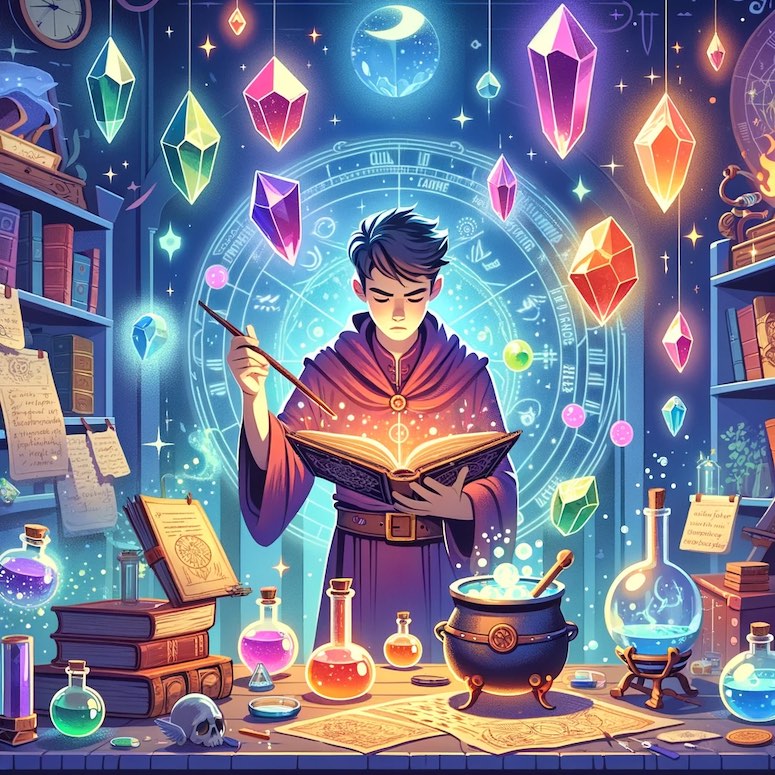
This might just be one of my favorite images that I created with a text-to-image model. Everything about it is magnificent, from the glowing crystals and levitating potential, to the glowing book of magic spells. The way these colors blend is spectacular. For this prompt, I decided to only specify the illustration style and then write a straightforward description of what should be depicted in the image.
When you see images like this, it's easy to see why Dall-E 3 is the best AI tool for illustrations.
prompt #2: line art illustration of a lone astronaut sitting on the moon, gazing at Earth from space, capturing the solitude and wonder of outer space exploration
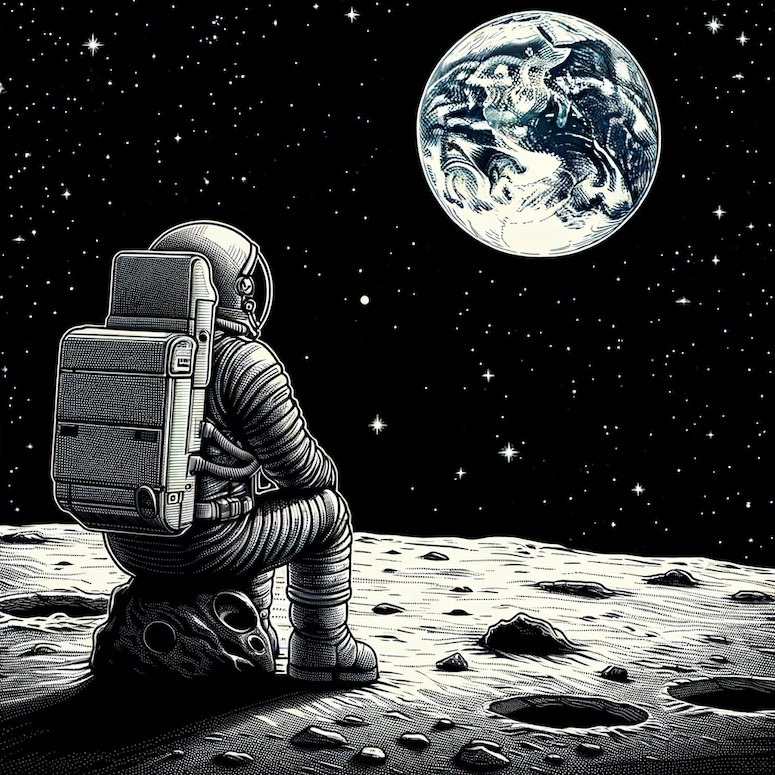
There is a good chance that you saw an image similar to this one. If it looks sort of familiar, that's because this isn't some new idea that I came up with. A lone astronaut sitting on the moon and gazing at our planet is imagery that's been featured in countless illustrations so far. There are many variations of this illustration that you can find online. However, this one might just be better than any similar image you can find on the internet.
prompt #3: 3D illustration depicting anthropomorphic dolphins running a beachside cafe, serving refreshing drinks and delicious seafood

I'd be scared to find out just how many hours I've spent interacting with AI tools so far. The last year has honestly been insane. It's hard to imagine what life would be like for me if I didn't use these tools and it's mind-blowing that there are so many people who still don't have a clue about them.
Anyway, my point is that I used these tools a lot and have come up with a very large number of prompt ideas. Since I don't want to repeat myself, some of the ideas that pop into my head are quite strange and peculiar. And you can see exactly that happening with this image. This is a very strange image but I like it. It makes me smile.
prompt #4: acrylic illustration capturing the vibrant energy of a carnival, with rides, colorful booths, and people enjoying the festive atmosphere
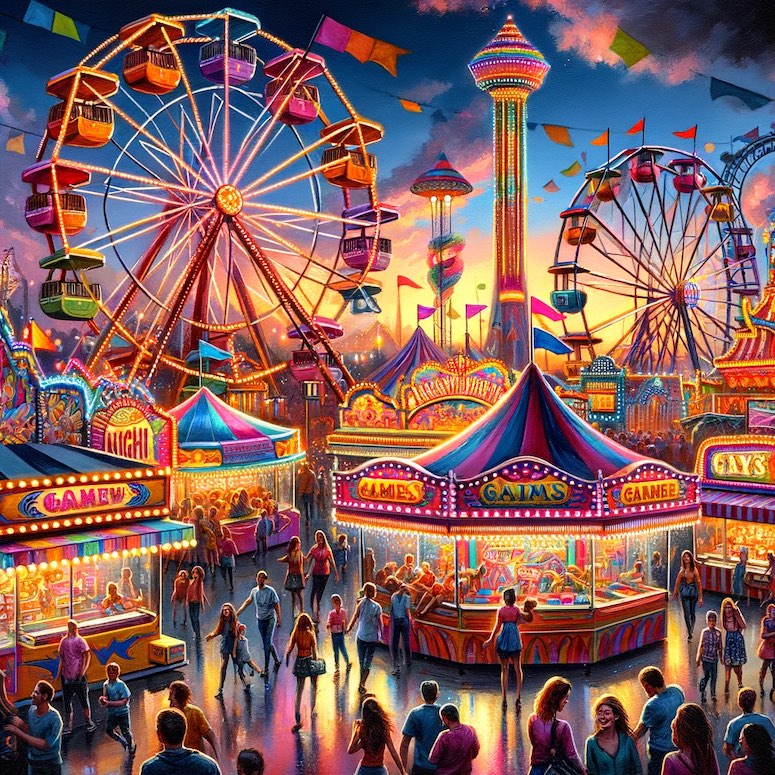
Pay attention to the adjectives I used in this prompt, such as 'vibrant' and 'colorful'. The adjectives you use in your prompts will have a big impact on the generated results. In this instance, it really helped breathe life into the image. An illustration of a carnival can sometimes look quite dull. But that's not what happened here.
prompt #5: line art illustration of an ancient castle on a mountaintop during a full moon, surrounded by mystical fog and guarded by mythical creatures
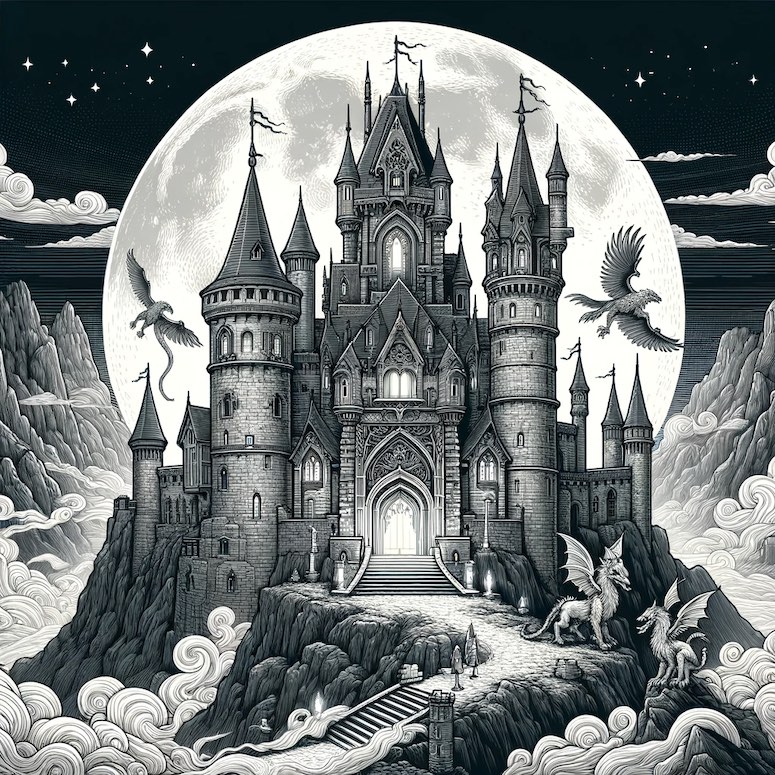
The attention to detail in this image is so great that it's extremely hard to tell that it was made with artificial intelligence. I guess there are some tiny errors that you could point out if you look really closely. For instance, a tail seems to be attached to the wing of the mythical creature on the left side of the image. But that's only minor. The castle looks breathtaking.
prompt #6: children's book style illustration of a wise owl guiding a group of curious youngsters through an enchanted forest, teaching them about wisdom and the magic of nature
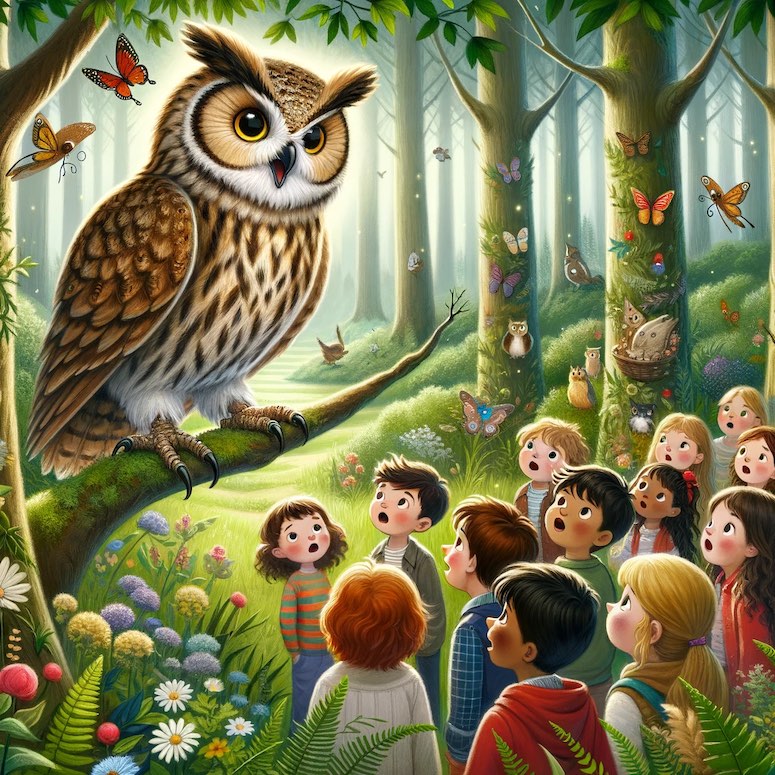
Although I could easily see this being featured in a children's book it's important to understand that using AI-generated images in books is still not something that's completely safe to do. This is a new technology and you can run into copyright issues if you were to sell books that contained images generated by AI. That's why we need more regulatory guidelines on how to use this technology and sell what we make with it.
Some would argue that if you write the prompt that led to a certain image being generated, it's basically the same as if you made it. It's still pretty much a gray area. But one thing that is known for certain is that you should always explicitly mention whether an image is generated with artificial intelligence if it's included in a product you're selling.
prompt #7: flat illustration of a futuristic space explorer navigating through asteroid fields and cosmic anomalies in a sleek, high-tech spaceship
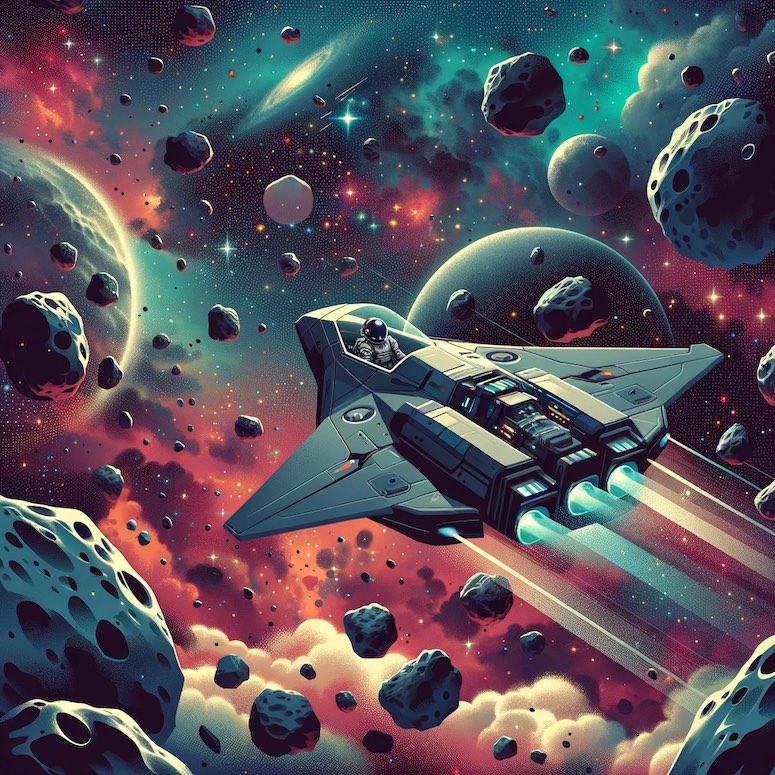
I like everything about this image. The only question I have is why is this astronaut sitting backwards? I could've chosen a different image, but I decided to keep this one. After all, not everything has to make perfect sense. Maybe the spaceship is set on autopilot and the astronaut is just kicking back and enjoying the scenery.
The colors featured in the background are really stunning. I also like the design of the spaceship as it features many intricate details.
prompt #8: cartoon style illustration of a mischievous group of robots causing playful chaos in a futuristic amusement park, creating laughter and joy
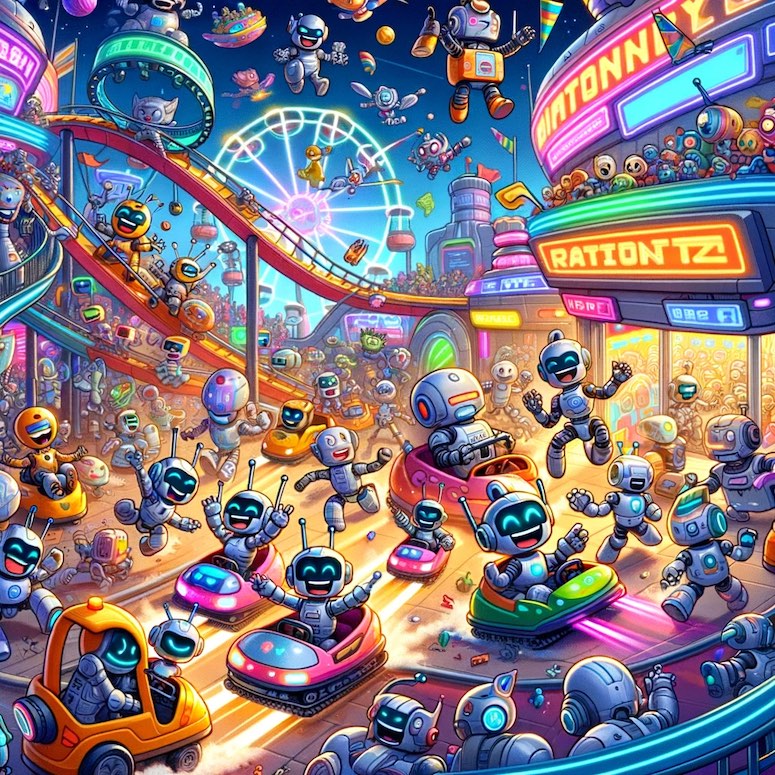
I feel like a great animated TV show could be made from a concept like this. Just imagine a futuristic world with remnants of what the human race left behind now being occupied by robots. It would be extremely funny. When I think about robots in that sense, I immediately remember Bender from Futurama. That's the best animated robot character ever made.
prompt #9: flat illustration of a young musician composing a symphony in a sunlit room filled with musical instruments and sheets of notes

Let's say that you want to make some educational content about how to increase your productivity when playing instruments. You have written a great article but you're struggling to find the right featured image on the internet. I've been there before. Many times.
The royalty-free images are just not good enough to make the article stand out. The stock images are overused and lack soul. Meanwhile, paying an illustrator to create something custom is not quite affordable. That's why Dall-E 3 can be of great assistance to you. Simply write a simple prompt, and the AI model will do the rest.
prompt #10: pencil style illustration of a medieval knight embarking on a quest to rescue a captured princess, featuring mythical creatures and epic battles
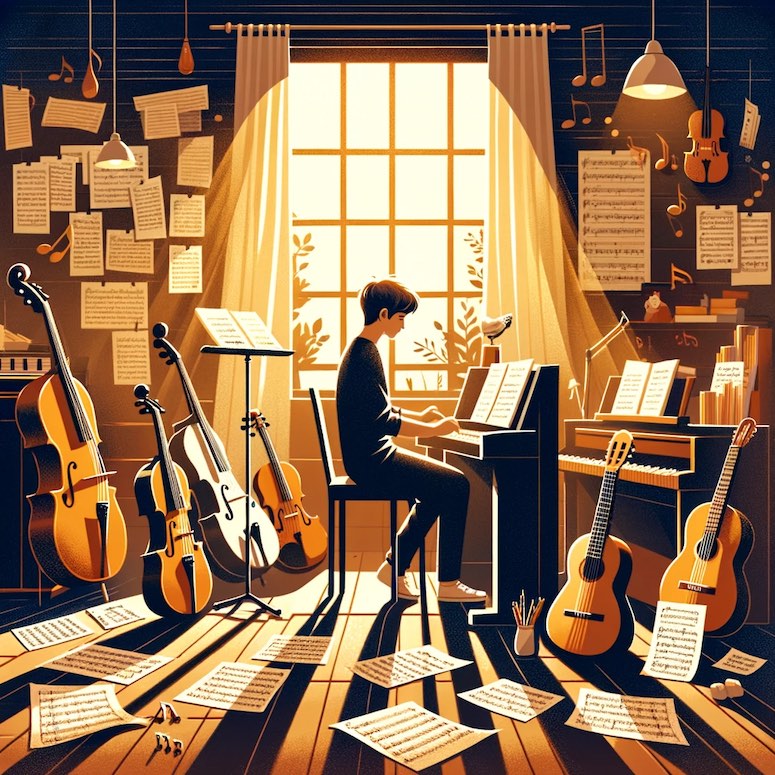
This is absolutely crazy. There is so much going on here and I don't see many errors at all. If you were to instruct Stable Diffusion to create an image with this level of detail, you'd see so many different errors. But that's not the case here. Everything blends perfectly together.
Just take a minute to look at the horse the main character is sitting on. Or even the mythical creatures featured in the image. It's difficult for me to describe just how impressed I am with this result.
prompt #11: acrylic illustration capturing the enchanting scene of fireflies lighting up a magical forest at night, illuminating the darkness with their gentle glow
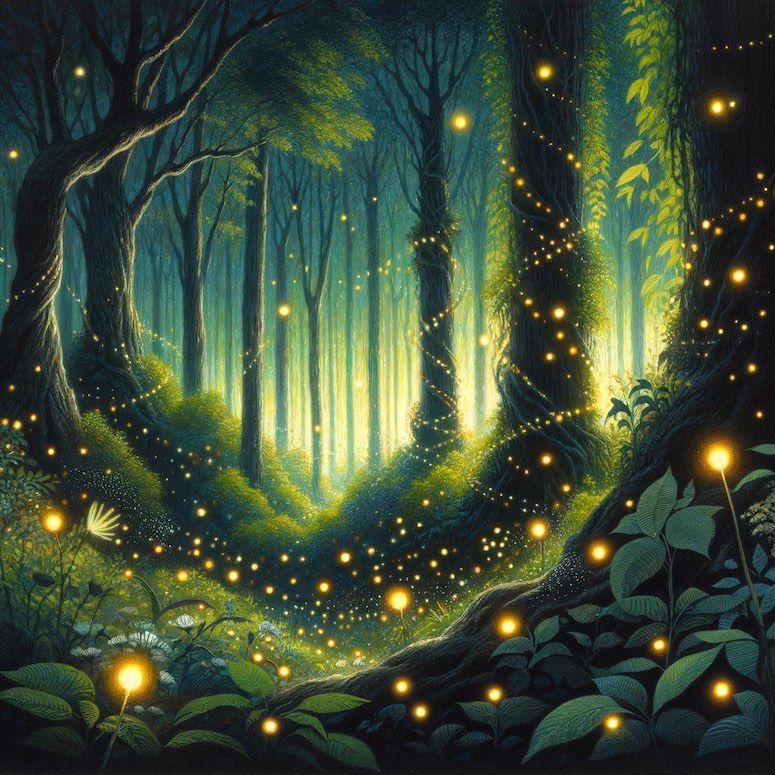
I personally feel like this image could serve as a great album cover. It would be a perfect fit for an ambient or electronic album. Although this is a great image, I think that most of the previous ones are much better and made a bigger impact on me.
prompt #12: vector graphics illustration depicting a cozy winter scene with a family building a snowman and sipping hot cocoa, emphasizing the warmth of the holidays
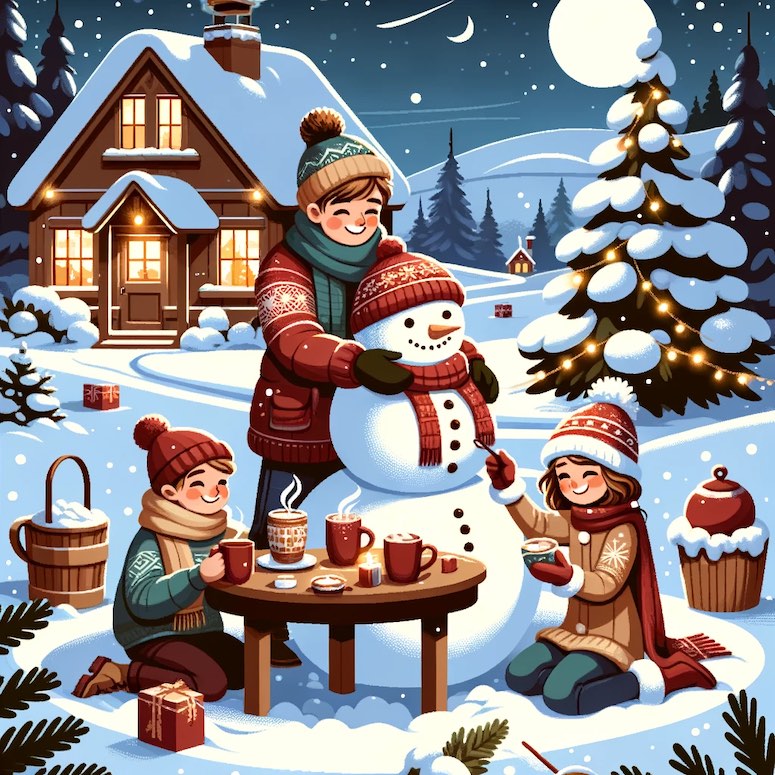
There is truly nothing like the holiday spirit. Even people who work the hardest throughout the year usually get at least a few days to cool off and spend time with their loved ones. The festive spirit is infectious and makes everybody feel a bit happier. There is plenty of food, drinks, and presents to go around.
I wanted to recreate that feeling with a simple text prompt, and you can see what I came up with. I think that Dall-E 3 did an excellent job with this image.
Final Thoughts
When it comes to illustrations, there is no text-to-image AI model that can beat Dall-E 3. But keep in mind that this applies only for this and a few other categories. If we were to compare photorealistic images produced by artificial intelligence, Midjourney would be superior. But anyway, I don't want to spend any more time debating on whether Midjourney or Dall-E 3 is better.
You can start making images with Dall-E 3 even if you have absolutely no prompting experience. All you have to do is explain to the model what you want to see generated in plain English. However, in my opinion, the best thing you can do is learn how to write proper prompts and then use them to unleash the full potential of this AI model.
When it comes to these types of images, I'd suggest you take some time to research the different types of illustrations that exist. This is valuable information that you should include in your prompts to make generated results better.